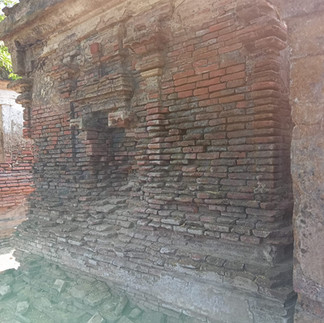Sannasi Panangudi, a village nestled within the Nagapattinam district in Tamil Nadu, stands as a testimony to a rich cultural heritage deeply rooted in religious significance. The Shiva temple situated here holds historical importance, reflecting the glory of the Chola period and serving as a place of worship for the Valangaiyar sect. This article aims to explore the historical context, architectural aspects, present condition, and recent restoration efforts of the Sannasi Panangudi Shiva Temple.
During the Chola era, the region was divided into valanadus, akin to present-day circles, with Panangudi serving as the district headquarters. This area holds two towns, Pillai Panangudi and Sannasi Panangudi, bearing cultural relevance owing to their association with clan deities like Sannasi and Champan, revered by the Valangaiyar sect. The settlement of this ethnic group might trace its origins to Sannasi Panangudi, named after their deity, or it could be linked to the residence of the Sannyasis or monks, leading to its alternative name, Sannyasi Panangudi.
The village, surrounded by vast agricultural lands, hosts the east-facing Shiva temple situated on the western bank of a big pond at the town's forefront. Unfortunately, the temple has fallen into disrepair, with most of its structure crumbling. Despite this, the sanctum sanctorum, Arthamandapam, and Mukha Mandapam still stand, dedicated to Lord Thalaraneswarar, alongside shrines for Ambigai, Vinayakar, Valli Deivanai Sametha Murugan, and Bhairava.
The temple, locked and inaccessible to visitors, reflects a poignant state of neglect. However, recent developments have seen efforts to restore its former glory. The discovery of missing Panchaloka idols of "Adipura Amman" and Ganesha, which disappeared in 1992, alongside other Ganesha idols from the Thalaraneswarar temple, marks a turning point in the restoration process. Plans are underway to commence restoration work, with Ganesha's return symbolizing the rejuvenation and revival of the temple.
In Sanathana Dharma, the act of building a temple for Lord Shiva holds profound spiritual significance. Those involved in its construction are believed to receive blessings equivalent to daily worship of Lord Shiva, while several generations of their ancestors are said to attain Shivaloka. Furthermore, intending to build a temple is considered a means to absolve sins from seven births, and completing its construction is believed to pave the way for enlightenment.
The Sannasi Panangudi Shiva Temple, despite its current dilapidated state, stands as a testament to the region's rich cultural heritage and religious significance. The planned restoration efforts serve as a beacon of hope, rekindling the spiritual and architectural magnificence that once graced this revered site.
Credits: Kadambur Vijay



























Comments